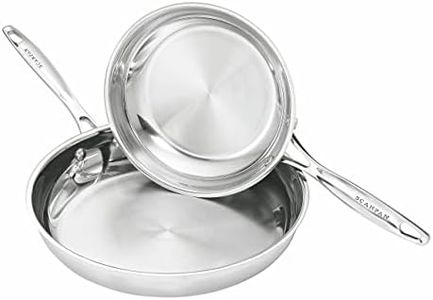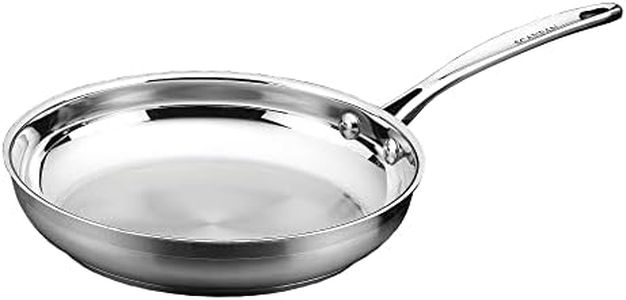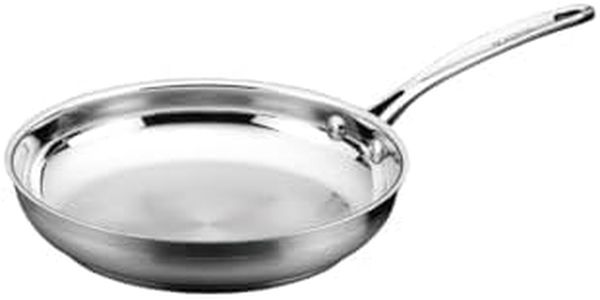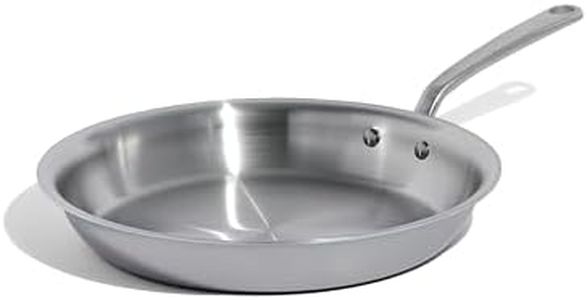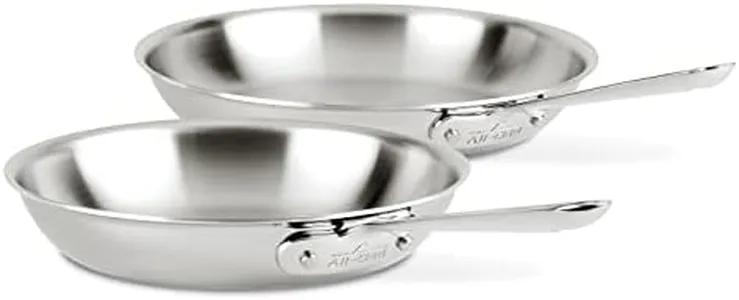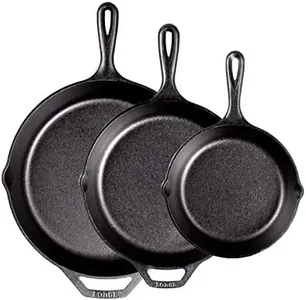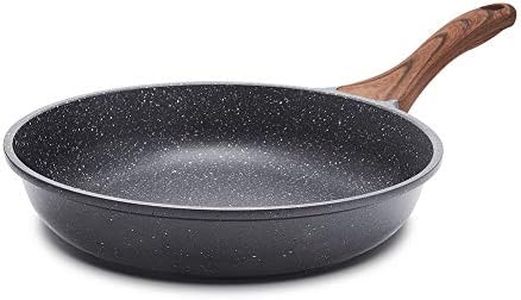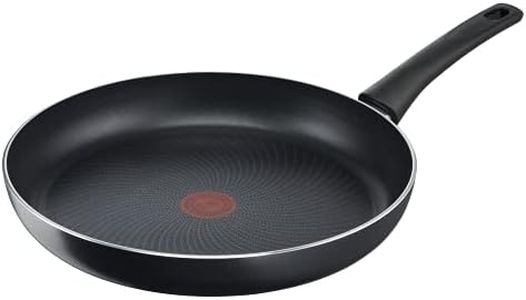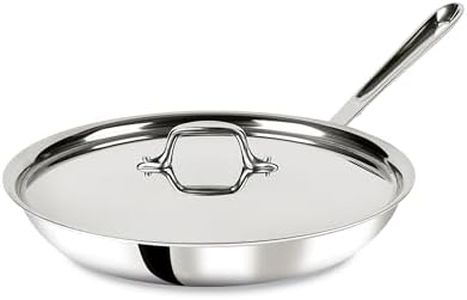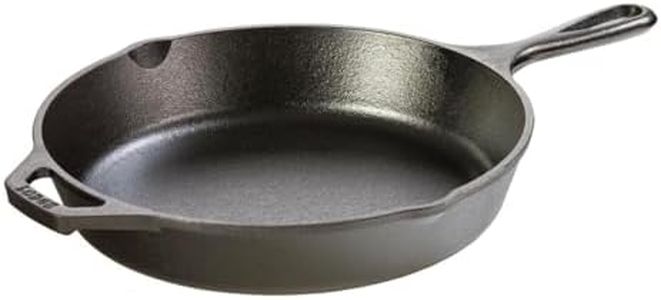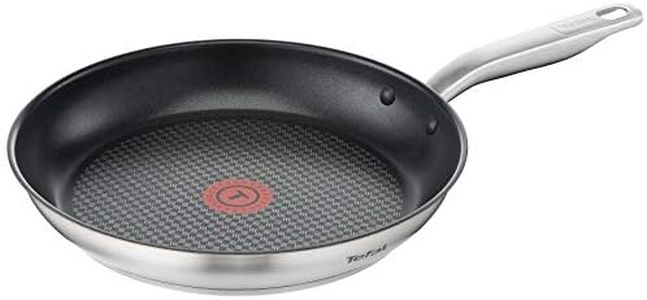We Use CookiesWe use cookies to enhance the security, performance,
functionality and for analytical and promotional activities. By continuing to browse this site you
are agreeing to our privacy policy
10 Best Frying Pans
From leading brands and best sellers available on the web.Buying Guide for the Best Frying Pans
Choosing the right frying pan can make cooking easier, more enjoyable, and help you get better results in the kitchen. The best frying pan for you depends on what, how, and how often you cook. It's important to consider a few main features, because each type of pan handles differently and has its own strengths and weaknesses. Think about the foods you prepare most and the cooking styles you use most often to guide your decision.MaterialThe material of a frying pan determines how it heats up, how evenly it cooks, and how easy it is to clean. The main materials are stainless steel, non-stick coated, cast iron, and copper. Stainless steel is durable and good for browning but may not be truly non-stick. Non-stick pans make cleaning easy but may not last as long, especially if used with metal utensils. Cast iron heats slowly but retains heat very well, perfect for high-heat searing and oven use, but needs special care to keep it rust-free. Copper heats fast and very evenly, but often has a lining to prevent reactions with food. The choice depends on what you cook: if you want easy cleanup for eggs and pancakes, non-stick might be best; for steak, cast iron could be ideal.
SizeFrying pans come in different diameters, typically from about 8 inches to 12 inches. The size affects how much food you can cook at once and can also influence how evenly the food cooks. Smaller pans (8-9 inches) are good for a single egg, small omelets, or reheating leftovers, while medium (10 inches) works well for most everyday dishes, and large pans (12 inches or more) are excellent for family meals or tasks like sautéing vegetables for a group. Think about the number of people you cook for most often, and make sure the pan fits your stovetop well.
Handle DesignThe handle should be comfortable to grip and securely attached, either riveted or welded to the pan. Some handles are made to stay cool during use, which is important if you’ll be moving the pan around a lot. If you plan to use the pan in the oven, make sure the handle is oven-safe; avoid those with plastic or rubber parts unless they’re rated for oven use. Choose a handle style that feels comfortable in your hand and suits your cooking habits.
Oven-Safe CapabilitySome pans are designed to move safely from the stovetop to the oven, which can be useful for finishing dishes or keeping food warm. Whether a pan is oven-safe depends on the material of both the pan and the handle. If you often cook recipes that start on the stove and finish in the oven (like frittatas or seared meats), check this feature and choose accordingly.
Non-Stick CoatingSome frying pans come with a coating that prevents food from sticking, which makes for easier cooking and cleanup. Non-stick coatings can differ in quality and longevity; some newer coatings claim to be more durable or safe for higher heat. If you cook delicate foods—like eggs, fish, or pancakes—a non-stick coating can make life much easier, but be aware that these coatings usually can't handle metal utensils and may wear out faster with frequent high-heat use.
Pan WeightThe weight of a frying pan affects how easy it is to handle. Heavier pans, like cast iron or thick stainless steel, tend to hold heat better and cook more evenly but can be hard to maneuver, especially for tasks like tossing vegetables or flipping pancakes. Lightweight pans are easier to lift and handle, great for quick-cooking and tossing foods, but may not heat as evenly. Your own strength and comfort should guide you here—if you have any trouble holding heavy items, try picking up a few pans in a store to see what feels best.
Compatibility with StovetopCertain frying pans are compatible with specific types of cooktops, such as gas, electric, ceramic, or induction. For induction stoves, the pan must have a magnetic base. If you already have an induction cooktop, confirm that the pan is marked as induction-compatible. Otherwise, most pans will work fine on gas and electric stoves.
